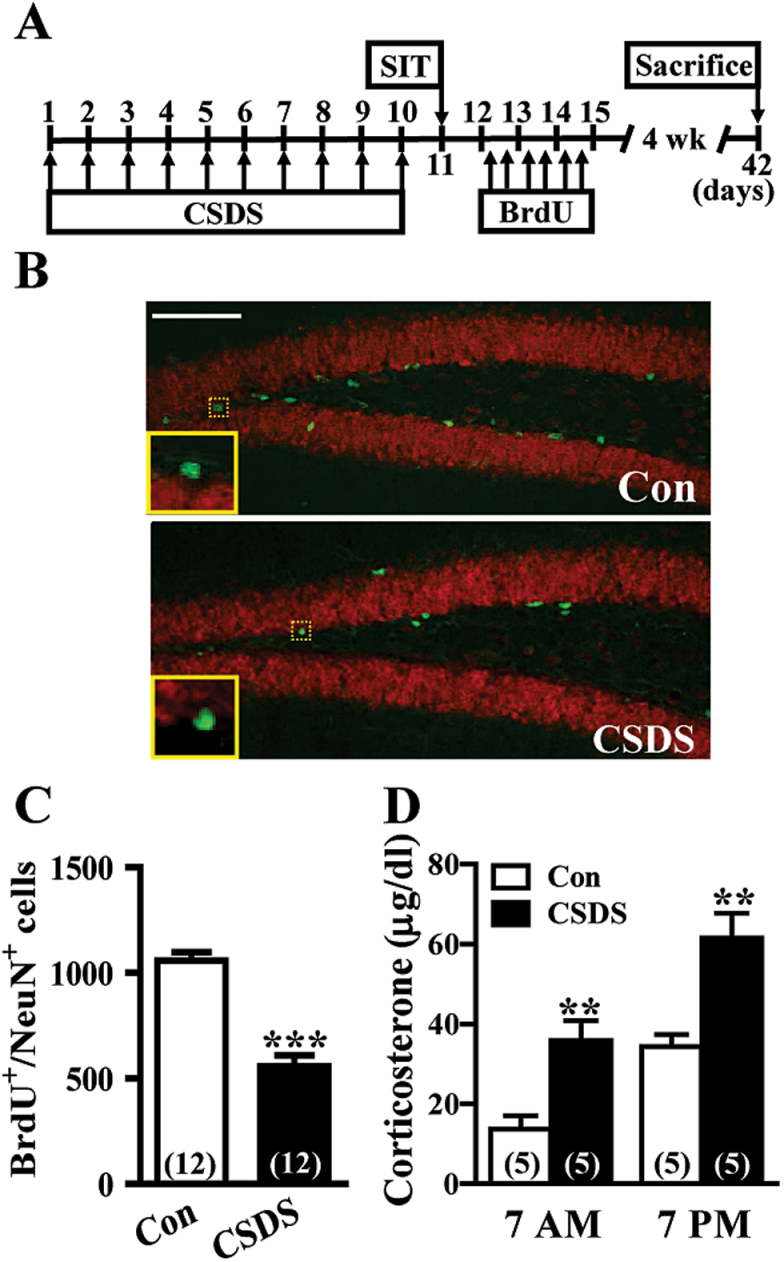Figure 1.
Chronic social defeat stress (CSDS) results in a decrease in the number of 5-bromo-2’-deoxyuridine (BrdU)-labeled cells in the dentate gyrus (DG). (A) Schematic representation of the experimental designs for comparing individual differences in the effect of CSDS on adult-born dentate granule cell (DGC) survival. Following a 10-day CSDS, mice were separated into susceptible and unsusceptible subpopulations at day 11. Control (Con) and susceptible mice to CSDS were then injected 6 times intraperitoneally with BrdU (50mg/kg) at 12-hour intervals starting 24 hours after social interaction test (SIT). Mice were sacrificed 4 weeks after the last BrdU injection. (B) Representative images with immunofluorescent staining showing expression of BrdU and neuronal specific nuclear protein (NeuN) in the DG from Con and CSDS mice. Scale bar=100 µm. (C) Quantification of numbers of BrdU+/NeuN+ cells in the DG from Con and CSDS mice (t (22) = 7.6, P<.001; unpaired Student’s t test). (D) Summary bar graphs depicting plasma corticosterone levels in Con and CSDS mice next day after the last defeat at 7 am (t (8) = 3.7, P=.006; unpaired Student’s t test) and 7 pm (t (8) = 3.9, P=.005; unpaired Student’s t test). The total number of animals examined is indicated by n in parenthesis. Data are presented as mean ± SEM. **P<.01 and ***P<.001 vs Con.

